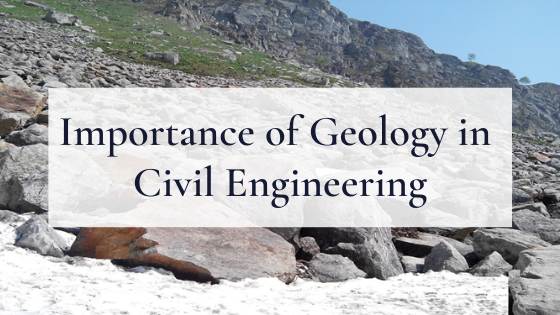Geotechnical Engineering For Construction Projects for Beginners
Geotechnical Engineering For Construction Projects for Beginners
Blog Article
The Best Guide To Geotechnical Engineering For Construction Projects
Table of ContentsLittle Known Facts About Geotechnical Engineering For Construction Projects.Not known Incorrect Statements About Geotechnical Engineering For Construction Projects Unknown Facts About Geotechnical Engineering For Construction ProjectsGeotechnical Engineering For Construction Projects Things To Know Before You BuyHow Geotechnical Engineering For Construction Projects can Save You Time, Stress, and Money.The Ultimate Guide To Geotechnical Engineering For Construction ProjectsThe 9-Second Trick For Geotechnical Engineering For Construction Projects
and Kovacs, W. (1981 ), An Introduction to Geotechnical Engineering, Prentice-Hall, Inc. Deep Check Technology (2023 ): Deep Scan Technology discovers concealed structures at the website of Denmark's tallest structure. "Geofrost Coring". GEOFROST. Recovered 20 November 2020. Han, Jie (2015 ). Concepts and Technique of Ground Improvement. Wiley. ISBN 9781118421307. RAJU, V. R.Ground Enhancement Technologies and Situation Histories. Singapore: Research Study Posting Providers. p. 809. ISBN978-981-08-3124-0. Ground Renovation Concepts And Applications In Asia. Pariseau, William G. (2011 ). Design analysis in rock technicians. CRC Press. Hegde, A.M. and Palsule P (Geotechnical Engineering for Construction Projects).S. (2020 ), Performance of Geosynthetics Reinforced Subgrade Subjected to Repeated Car Loads: Experimental and Numerical Studies.
Cengage Understanding, Stamford, 666 p. Atkinson, J., 2007. The technicians of soils and structures. The Observational Technique in ground engineering principles and applications.
All About Geotechnical Engineering For Construction Projects
Laboratory and area testing plays a vital function in this procedure. By drawing out examples from the planet's subsurface and applying a suite of examinations, geotechnical designers can forecast the behavior of soil layers and assess their suitability for different building and construction endeavours. The significance of geotechnical design in civil design can not be overemphasized, attributable to several factors: The first action in any geotechnical study entails identifying the soil type at the building and construction site.
Comprehending these qualities makes sure that only appropriate soil kinds are chosen for the growth, thereby preventing potential architectural failings. The foundation serves as the bedrock of any kind of building task. Picking the appropriate structure kind is a choice that pivots on the extensive evaluation given by geotechnical engineering. This makes sure the long life and security of structures by fitting the tons they will certainly birth.

Geotechnical site investigation is a critical step in the planning and implementation of any kind of building job. It involves the collection and analysis of data connected to the physical properties of soil and rock below a proposed building site. This info is crucial for the design and building of safe, stable, and sustainable structures.
Not known Facts About Geotechnical Engineering For Construction Projects
In this blog site, we will certainly look into the significance of geotechnical site investigation, its various components, and exactly how it benefits construction projects. Geotechnical site investigation, also understood as subsurface expedition, entails a collection of activities focused on identifying the dirt, rock, and groundwater conditions at a building and construction website. The key purposes are to determine prospective geotechnical hazards, examine the design homes of subsurface products, and offer suggestions for the layout and building of structures, retaining wall surfaces, and various other frameworks.
The workdesk study helps in identifying possible geotechnical issues and preparing the subsequent fieldwork. This involves observing the topography, water drainage patterns, existing frameworks, plant life, and any indications of instability or erosion.
Geotechnical Engineering For Construction Projects Fundamentals Explained
Superficial test pits are excavated to straight observe and example the dirt and rock. This technique works for researching the upper layers of the subsurface and determining near-surface dangers. Non-invasive geophysical approaches, such as seismic refraction, ground-penetrating radar (GPR), and electric resistivity tomography (ERT), are used to map subsurface conditions and find anomalies.
Dirt and rock samples accumulated throughout the field investigation go through research laboratory screening to establish their physical and mechanical properties. Usual laboratory examinations consist of grain dimension evaluation, Atterberg restrictions, compaction tests, triaxial shear examinations, and consolidation tests. These examinations provide vital data for geotechnical evaluation and layout. The data gathered from the desk research, site reconnaissance, area investigation, and lab screening are analyzed and interpreted to develop an extensive understanding of the subsurface problems.
The primary advantage of geotechnical website investigation is guaranteeing the security and security of structures. By recognizing the subsurface conditions, engineers can develop structures and various other structural components that can hold up against the loads and ecological pressures they will certainly go through. This lessens the danger of settlement, decrease, and architectural failure.
The Ultimate Guide To Geotechnical Engineering For Construction Projects
This ensures efficient and risk-free construction techniques. Geotechnical site investigations are commonly required by constructing codes and policies.
This information is very useful for project supervisors, architects, and service providers in creating reasonable routines, budgets, and backup strategies. Geotechnical Engineering Clicking Here for Construction Projects. Skyscraper in a Coastal AreaIn a seaside city, a high-rise domestic structure was intended on a website with believed loose sand down payments and a high water table. A thorough geotechnical investigation, including borehole exploration, CPT, and geophysical studies, was carried out
The Basic Principles Of Geotechnical Engineering For Construction Projects
Based upon these findings, the foundation layout was modified to consist of deep heap structures prolonging into stable strata, and ground enhancement techniques, such as vibro-compaction, were carried out to minimize liquefaction risks. This positive method made sure the safety and security of the structure while preventing pricey post-construction removal. Facilities Advancement on a Sloping TerrainA significant framework project, entailing the building of a freeway and bridges, was prepared on an uneven surface with high inclines.

The Leaning Tower of Pisa (Italy), an iconic building wonder, is infamous for its unintended tilt from considerable geotechnical problems. The tower's structure was inadequately made to manage the soft, unsteady dirt below it, causing unequal settlement and its distinct lean. Our world is dotted with excellent infrastructure projectsfrom looming skyscrapers to stretching bridgesall standing testimony to the advancement of the numerous building tools and techniques readily available.
Geotechnical engineering is a specific field within civil engineering that concentrates on researching the habits of earth products. This branch digs deep into the groundinvestigating how the Full Report soil, rock, and groundwater at a construction website can influenceand be influenced bythe infrastructure that we put up on and into them. Before a solitary brick is laid or a concrete structure put, geotechnical designers probe right into the earthgathering important information concerning the website's dirt structure, rock structure, and groundwater levels.
Some Known Facts About Geotechnical Engineering For Construction Projects.

is a device utilized to assess the integrity and load-bearing capacity of stacks during installation, leveraging the concept of wave propagation. It enhances building and construction effectiveness by supplying real-time analyses, hence guaranteeing secure and reliable pile structures. One of the functional applications of geotechnical design entails choosing and implementing the best approaches for foundation construction.
Load driving stands for greater than the mere act of placing architectural components into the image source ground. On the contrary, it is a thoroughly managed procedure of transferring a framework's tons past the less secure soil layers closer to the surfacedown to the a lot more considerable strata that lie under. When it comes to pile driving, take into consideration exactly how geotechnical designers expertly use this strategy to evenly disperse the framework's weight.
Report this page